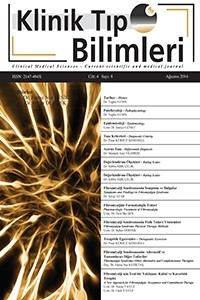Obezitede Diyetin Düzenlenmesi
ÖzObezite, alınan enerji fazlalığı ve yetersiz aktivite nedeniyle, yağ depolarında aşırımiktarda yağ depolanması ile tanımlanabilecek, görülme sıklığı artış gösteren, yalnızca yetişkinleri değil adölesanları ve çocukları da kapsayan küresel bir sorun haline gelmiştir. Obezite birçok kronik hastalığın oluşma riskini arttırır, tanısı konmuş hastalıkların prognozunu etkiler ve yaşam kalitesini düşürür. Obezite tedavisinin en etkin yöntemlerinden biri kuşkusuz diyet tedavisidir. Tıbbi beslenme tedavisinde geleneksel kalori kısıtlamalı diyet yöntemleri sık kullanılmaktadır ancak buna ek güncel yaklaşımlar da mevcuttur. Çok düşük kalorili diyetler, çok düşük yağlı diyetler, düşük karbonhidratlı/yüksek proteinli, aralıklı oruç diyetleri gibi yaklaşımlar ile ilgili çalışmalar da sürmektedir.Tıbbi beslenme tedavisi düzenlenirken dikkat edilmesi gereken en önemli unsur, diyetin bireyselleştirilmiş, davranış değişikliği oluşturarak nüks riskini azaltarak uzun vadede yapılabilir olmasıdır.
Anahtar Kelimeler:
obezite, düşük karbonhidratlıdiyet, aralıklı oruç diyetleri, yüksek proteinli diyet, kalorikısıtlamalı diyet
Diet Regulation in Obesity
Abstract Obesity, may define extreme fatstock in body by the reason of excessice energy in take and inadequate physical activity. Obesity is increasing in prevalence global problem in adults, adolescences and children. Obesity increases the risk of many chronic diseases and effects prognosis which has diagnosed diseases and decreases life quality. Diet therapy is one of the most effective method of obesity treatment. Traditional low caloric diets are commonly use in medical nutrition theraphy but in addition to that, current approaches are use as well. Studies continue in very low caloric diets, low carb/high protein diets, intermittent fasting diets. etc. dietetic approaches. Individualized dietary therapy is the most important factor in designing the medical nutrition therapy for the changing habits and reduce risk of relapse and must be sustainable.
Keywords:
obesity, lowcaloriediet, low-carbohydrate, high protein, intermittentfasting,
___
- Kaynaklar 1.WHO Media Centre. ObesityandOverweight.(2016). Eri-şim:28.02.2017. http://www.who.int/mediacentre/factsheets/fs311/en/index.html 2.Kotsis V, Stabouli S, Papakasikal S, Rizos Z, Parati G. Mechanisms ofobesity-inducedhypertension. HypertensRes. 2010 May;33(5):386-93 3.Poirier P, Giles TD, Bray GA, Hong Y, Stern JS, Pi-Sunyer X, Ec-kel RH. Obesityand Cardiovascular Disease: Pathophysiology, Eva-luation, and Effect of WeightLoss An Update of the 1997 American-HeartAssociationScientific Statement on ObesityandHeartDiseaseF-romtheObesityCommittee of theCouncil on Nutrition, Physical Ac-tivity, andMetabolism. Circulation. 2006;113:898-918 4.Xial Q, Grand FA S.Thegenetics of humanobesity.Ann N Y AcadS-ci. 2013 Apr;1281(1):178–190. 5.Friedman JM. Leptinandtheregulation of body weight in mammals.Keio J Med. 2011;60(1):1-9. 6.Mercanlıgil, S. Kaybedilen Ağırlığın Korunması. TurkishJournal ofEndocrinologyandMetabolism (2003); Suppl2:39-43. 7.Position of the Academy of NutritionandDietetics: Interventionsfort-heTreatment of OverweightandObesity in Adults. J AcadNutrDiet.2016;116:129-147 8.Dalton S. The Dietitians’ Philosophy and Practice in Multidiscipli-nary Weight Management.J Am Dıet Assoc.1998;98(10):49–54 9.Position of theAmericanDieteticAssociation. AdultWeight Manage-ment Guideline: MajorRecommendations.J Am Dıet Assoc.2009;109(2):330-346 Doi:10.1016/j.jada.2008.11.041 10.Jensen MD. Expert panel report: Guidelines (2013) forthemanage-ment of overweightandobesity in adults. Obesity. 2014;22:41-410.Doi:10.1002/oby.20660 11.Johannsen DL, Knuth ND, Huizenga R, Rood JC, Ravussin E, HallKD. Metabolicslowingwithmassiveweightlossdespitepreservationof fat-freemass. J ClinEndocrinolMetab. 2012 Jul; 97(7): 2489–2496.doi: 10.1210/jc.2012-1444 12.Pawlak DB, Ebbeling CB, Ludwig DS. Shouldobesepatients be co-unselledtofollow a low-glycemicindexdiet? Yes. ObesRev. 2002Nov;3(4):235-43. 13.Lichtenstein AH, Appel LJ, Brands M, Carnetho M, Daniels S, FranchHA, Franklin B, Kris-Etherton P, Harris WS, Howard B, KaranjaN, Lefevre M, Rudel L, Sacks F, Van Horn L, Winston M, Wylie-Ro-sett J. Dietandlifestylerecommendationsrevision 2006: A scientific-statementfromtheAmericanHeartAssociationNutritionCommittee.Circulation. 2006;114:82-96. 14.Lissner L, Heitmann BL. Dietaryfatandobesity: evidencefromepide-miology. Eur J Clin Nutr.1995;49:79–90 15.Jensen MD, Ryan DR, Apovian CM et al. 2013 AHA/ACC/TOS gui-delineforthemanagement of overweightandobesity in adults: a reportof theAmericanCollege of Cardiology/AmericanHeartAssociation-Task Force on PracticeGuidelinesandTheObesitySociety. Circula-tion2014;129:102–138. 16.Verylow-caloriediets. NationalTask Force on thePreventionandTre-atment of Obesity.. JAMA 1993; 270:967-974. 17.H. M. Parretti, S. A. Jebb, D. J. Johns, A. L. Lewis, A. M. Christi-an-Brown, P. Aveyard. Clinicaleffectiveness of very-low-energydi-ets in themanagement of weightloss: a systematicreviewand meta-analysis of randomizedcontrolledtrials.ObesRev. 2016 Mar;17(3):225-34. doi: 10.1111/obr.12366. Epub 2016 Jan 18. 18.Noakes TD, Windt J. Evidencethatsupportstheprescription of low-car-bohydratehigh-fatdiets: a narrativereviewJ. Br J Sports Med2016;51:133–139. doi:10.1136/bjsports-2016-096491 19.Special Committee on Nutrition. A critique of low-carbohydrateke-togenicweightreductionregimens: a review of Dr. Atkins’ dietrevo-lution. JAMA. 1973; 224:1415–1419. 20.St. Jeor ST, Howard BV, Prewitt E, et al.Dietary protein andweight-reduction. A statementforhealthcareprofessionalsfromthenutrition-committee of theCouncil on nutrition, physicalactivity, andmetabolismof theAmericanHeartAssociation. Circulation 2001;104:1869-74. 21.Santesso N, Akl EA, Bianchi M, Mente A, Mustafa R, Heels-AnsdellD et al. Effects of higher- versuslower-protein diets on healthoutco-mes: a systematicreviewand meta-analysis. Eur J ClinNutr 2012;66:780-788 22.Clifton PM, Condo D, Keogh JB. Longtermweightmaintenanceafte-radvicetoconsumelowcarbohydrate, higher protein diets - a systema-ticreviewand meta analysis. NutrMetabCardiovascDis 2013;24:224–235. 23.Ornish D. Dietandfitnesschangesreversecoronaryarterydisease.World RevNutrDiet1993; 77:38-48. 24.Lichtenstein AH, Van Horn L. Verylowfatdiets. A statementforhealth-careprofessionalsfromthenutritioncommittee of theCouncil on nut-rition, physicalactivity, andmetabolism oftheAmericanHeartAssocia-tion. Circulation 1998;98:935-9. 25.Varady KA. Intermittentversusdailycalorierestriction: whichdietre-gimen is moreeffectiveforweightloss? ObesRev 2011;12:593–601. 26.Horne BD, Muhlestein JB, Anderson JL. .Healtheffects of intermit-tentfasting: hormesisorharm? Am J ClinNutr. 2015 Aug;102(2):464-70. doi: 10.3945/ajcn.115.109553. Epub 2015 Jul 1. 27.Mattson MP1, Longo VD2, Harvie M3.Impact of intermittentfastin-gon healthanddiseaseprocesses. AgeingResRev. 2016 Oct 31. pii:S1568-1637(16)30251-3. doi: 10.1016/j.arr.2016.10.005. 28.Johnstone A1.Fasting forweightloss: an effectivestrategyorlatestdie-tingtrend? Int J Obes (Lond). 2015 May;39(5):727-33.doi:10.1038/ijo.2014.214.
- ISSN: 2147-494X
- Başlangıç: 2013
- Yayıncı: Selen Medya Yayıncılık Tanıtım ve Organizasyon Hizmetleri
Sayıdaki Diğer Makaleler
Obezite Epidemiyolojisi ve Korunma
“Hipertansiyon ve Egzersiz; İyi Ama Nasıl”
Çocuk ve Ergenlerde Hipertansiyon:Son Gelişmeler Işığında Tanı ve Tedavi?
Tedavi Hedefleri: Ne Kadar Kabul Edilebilir?
Hipertansiyonda Akılcı İlaç Tedavisi
Antihipertansif Tedavide Kalp Hızı:Dikkate Alınmalı Mı?
Obezitede Diyetin Düzenlenmesi
Sağlıklı Beslenme –Neleri Gözden Kaçırıyoruz?
Kimde Sekonder Hipertansiyon Aramalıyım?
